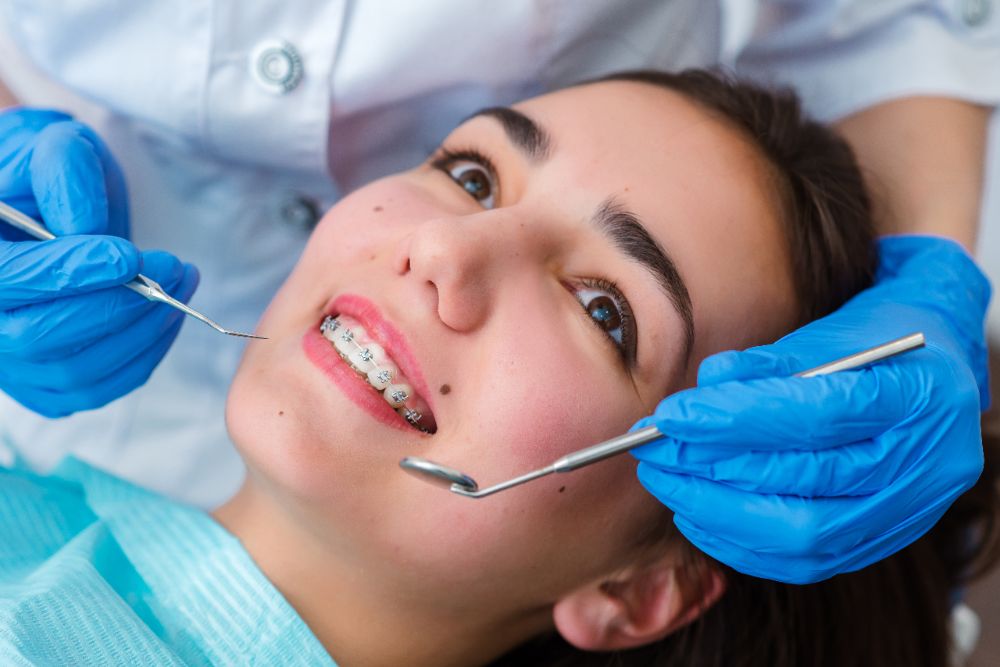Comprehensive Guide to Orthodontics Procedures for Dealing With Dental Misalignments
In the world of orthodontics, the trip to achieving a completely straightened smile involves a myriad of procedures customized to deal with dental misalignments. From standard dental braces to invisible aligners and also medical options, the field of orthodontics uses a series of solutions to deal with differing levels of oral abnormalities. Understanding the intricacies of each procedure, including their systems, advantages, and possible drawbacks, is important in making notified choices regarding one's orthodontic therapy. As we browse via the thorough overview to orthodontic treatments for dealing with oral imbalances, the detailed information of each approach will certainly unravel, losing light on the course towards a practical and harmonious dental alignment.
Orthodontic Procedures Summary

Along with typical dental braces and clear aligners, orthodontists might likewise recommend other treatments like headgear, palatal expanders, or retainers to resolve certain alignment problems (cumming orthodontist). These procedures are tailored per client's one-of-a-kind needs and might entail a combination of therapies to attain the preferred outcomes. Normal adjustments and surveillance are essential components of orthodontic therapy to ensure development gets on track and to make any required alterations along the road. By going through orthodontic treatments, people can not only accomplish a straighter grin yet also improve their general dental wellness and function.
Standard Dental Braces: Just How They Function
When taking into consideration orthodontic treatments for oral imbalances, conventional dental braces attract attention as a tried and true method for dealing with teeth positioning. Traditional dental braces consist of braces, cables, and bands that work with each other to apply continual pressure on the teeth, progressively moving them right into the preferred alignment. The braces are connected to the teeth utilizing a special adhesive, and the cords are threaded with the brackets. By changing the tension of the cords, orthodontists can control the instructions and pressure put on each tooth, guiding them right into correct positioning over time.
As stress is used to the teeth via the dental braces, the bone bordering the teeth is improved to sustain the brand-new tooth placements. People will need regular adjustments at the orthodontist's office to ensure the braces continue to apply the correct pressure for effective teeth movement.
Invisible Aligners: Cons and pros
Invisible aligners offer a convenient and very discreet choice to conventional braces for fixing dental misalignments. These clear, custom-made trays are virtually invisible when worn, making them an enticing alternative for people seeking a more aesthetically pleasing orthodontic treatment. Among the try this out main advantages of invisible aligners is their removability, permitting less complicated upkeep of oral hygiene compared to typical dental braces. Clients can remove the aligners prior to consuming or brushing their teeth, decreasing the risk of food obtaining stuck in the appliance and streamlining the cleaning process.

Surgical Orthodontic Options
Surgical treatments in orthodontics existing sensible alternatives for addressing complicated dental misalignments that may not be efficiently solved via traditional orthodontic treatments. While invisible aligners and traditional braces can correct many orthodontic issues, particular instances call for medical intervention to achieve optimal outcomes. Surgical orthodontic alternatives are commonly advised for serious malocclusions, significant jaw discrepancies, and cases where the underlying bone framework requires adjustment to achieve correct placement.
One typical surgical orthodontic procedure is orthognathic surgical procedure, which includes repositioning the jaws to correct useful problems such as difficulty speaking or eating. This surgical treatment is frequently performed in cooperation with an orthodontist who helps straighten the teeth before and after the treatment. Surgical orthodontics might also entail procedures to expose affected teeth, remove excess periodontal tissue, or improve the jawbone to produce an extra unified facial account.
Before taking into consideration surgical orthodontic options, individuals undergo a comprehensive examination to identify the need and prospective advantages of such interventions. invisalign. While surgery may seem daunting, it can dramatically improve both the feature and aesthetic appeals of the smile in cases where traditional orthodontic therapies fail
Retainers and Post-Treatment Treatment

Post-treatment treatment involves following the orthodontist's directions faithfully. This may include appropriate dental health techniques, attending follow-up visits, and using the retainers as suggested. Failing to adhere to post-treatment care instructions can result in regression, where the teeth progressively relocate back in the direction of their initial positions. Consistent retainer wear, great dental hygiene, and regular oral check-ups are necessary for keeping the outcomes attained via orthodontic surgery and guaranteeing the long-lasting stability of the fixed dental positioning.
Conclusion
Finally, orthodontic treatments use different options for fixing oral imbalances. Standard braces make use of steel brackets and wires to change teeth into proper placement. Unseen aligners supply a more very discreet option however might not be ideal for all situations. Surgical orthodontic options are readily available for a lot more severe how to choose a dentist imbalances. Retainers are frequently used post-treatment to keep the new alignment. Generally, orthodontic procedures can properly enhance oral health and wellness and aesthetic look. site link
As we navigate with the thorough guide to orthodontic treatments for fixing oral imbalances, the elaborate information of each method will unravel, shedding light on the path towards a harmonious and practical dental positioning. - cumming invisalign
One of the most common orthodontic therapies is the usage of dental braces, which consist of metal braces and cords that use gentle pressure to slowly change teeth right into the desired setting.When taking into consideration orthodontic therapies for dental misalignments, typical braces stand out as a time-tested technique for dealing with teeth placing. Furthermore, undetectable aligners may not be suitable for complicated orthodontic problems that need even more considerable teeth activity, as they are typically recommended for mild to moderate situations. Retainers are tailor-made orthodontic tools made to hold teeth in their dealt with placements after the conclusion of orthodontic therapy.